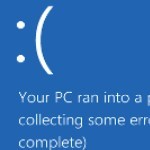By Windows Guides
What is R.A.M. and Why Do You Need It?
We recently launched our suggestion box (Read about it here) where we ask you to help us improve our site, and to come up with suggestions as what articles to write. In response to that Bert H. asked us to write:
“A clear and concise explanation about RAM. A lot of my co-workers are clueless about what it is, what it does, and why upgrading is simple.”
RAM the story behind…RAM (or R.A.M) is an acronym for Random Access Memory (pronounced ramm). This is, your computers short time memory, which temporarily stores important data or information while the computer is working. In the early days of Computer Development, all data and information had to be stored on magnetic tapes in reels. In order to retrieve the data, you had to rewind the tape to the beginning and then search through the tape until you found the part needed. With RAM you didn’t have to do that anymore. The CPU (Central Processing Unit, or the number-crunching part of your computer) could access “randomly” parts of the memory, without having to search through the entire thing. RAM is organized and controlled in a way that enables data to be stored and retrieved directly from specific locations. Which of course saved a lot of time and energy. Thus making the computer faster and more efficient.
Size and type
[Updated] As several readers (my father included) has pointed out: The first computers didn’t have more than 16 to 64kb RAM. The first computers that hit the home market ( IBM 286/386 machines) back in 1982 could access up to 16MB of RAM, and it’s predecessor could not access more than 1MB at most. That was back in the 80′ies, when Bill Gates himself, said: “640 Kb should be enough memory for anybody…” which of course today wouldn’t even launch your watch, or cellphone, or scientific calculator.
That’s just an example of how time changes everything. Today, you need at least 2GB of RAM if you want your Windows 7 computer to run even decently. Yes, I know you can get it working on less, but it would be like putting bike pedals on your new Hummer and go for a drive in the outlands.
This excerpt appears with the permission of Windows Guides.




